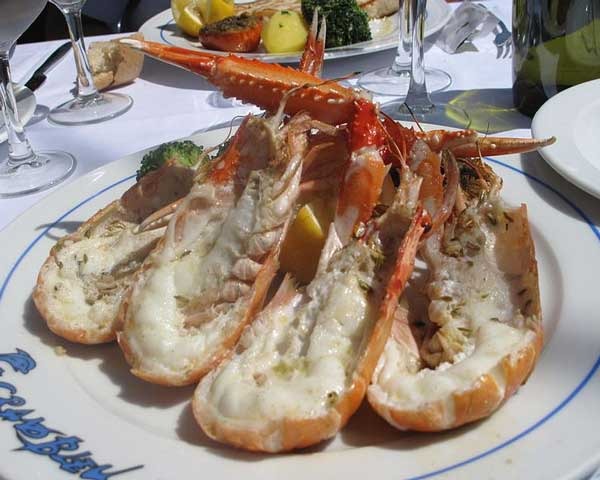What Is A Langoustine?
You've probably spotted langoustines on restaurant menus, or possibly garnishing raw bars, and wondered just what in fact they are. Well wonder no further.
Langoustines, also known as Norway lobsters, Dublin Bay prawns, scampi (in Italian), and cigala in Spanish) are essentially small lobsters. Averaging about eight inches long, they look basically identical to lobsters, but they're skinnier and generally a lighter shade of pink. Fished from the silty bottom of the Atlantic Ocean and Mediterranean Sea, they're usually prepared by removing the meat from the shell and sautéing it, lightly poaching the whole thing in court-bouillon, or by slicing the entire langoustine in half and cooking it quickly cut-side-down on a hot grill or plancha.
While most people associate langoustines more closely with shrimp, it's best to think of them as a small lobster, especially when it comes to flavor (they're also in a different family from shrimp entirely). If you need further proof, all you need to do is taste them; the flavor is undeniably lobster-like.
